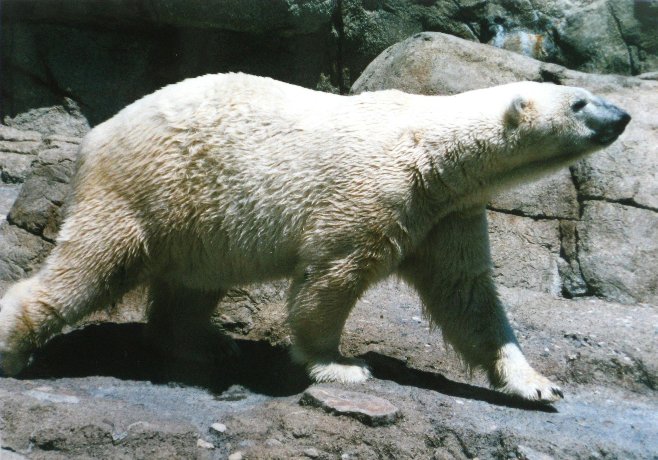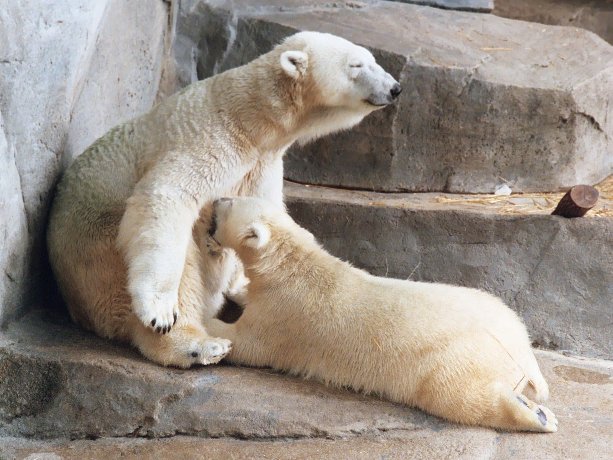 |
 |
Ursus maritimus
The Polar Bear lives in north polar regions. The color of its fur is white, but it usually yellows with age.
It is the largest living land carnivore. It feeds almost exclusively on seals, although it is an opportunistic feeder and will eat almost anything if hungry, including fish, seabirds, and reindeer. The Polar Bear has an extremely well-developed sense of smell, being able to detect seals nearly a mile away and buried under three feet of snow. It is an enormously powerful predator. It can kill an adult walrus, although it rarely attempts to do so as a walrus can be twice the bear's weight. Polar Bears are aggressive and inquisitive, and, as such, potentially dangerous to humans. Unlike most other bears, wild Polar Bears are poorly habituated to humans and will quickly assess any animal they encounter as potential prey.
The key danger to Polar Bears is malnutrition or starvation due to habitat loss: they hunt seals from a platform of sea ice. Rising temperatures cause the sea ice to melt earlier in the year, driving the bears to shore before they have built sufficient fat reserves to survive the period of scarce food in the late summer and early fall.
The bear on the left was a resident of the Indianapolis Zoo,
in July 2000.
The mother with the milking baby on the right was found at the
Brookfield Zoo of Chicago, Illinois, in August 2004.
Genus Ursus
Family Ursidae
Superfamily Canoidea
Order Carnivora
Subclass Eutheria
Class Mammalia
Subphylum Vertebrata
Phylum Chordata
Kingdom Animalia
Life on Earth
Index